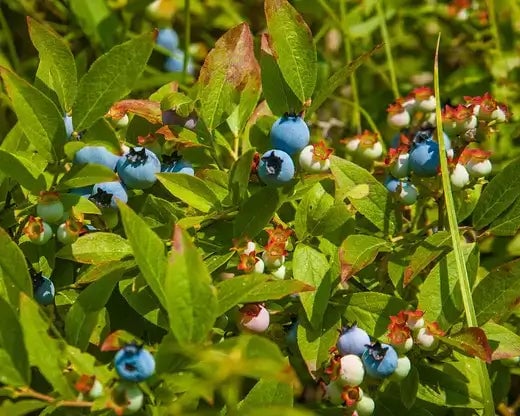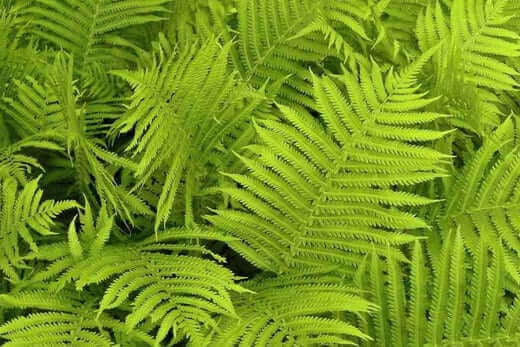New York Fern is one of many different types of ferns.

Ferns make the riverbanks along lakes, streams, and ponds look beautiful and give them their gorgeous beauty.
New York Ferns make a great addition to any stream, pond, lake, or creek because they give it beauty with their full green foliage and even aid in soil erosion. The fern roots clump together, preventing soil erosion and decaying, such as rubber bands.
Ferns are a great sight in the wild, but it is always advised to leave them where they are and purchase them from a wholesaler or online plant nursery. There are two different types of ferns, wet ones or ferns that grow along the creek beds and river banks and dry ones. Dry ferns love areas such as rock beds or areas where they can grow because they are well-drained.
Many people love to plant ferns along their natural areas or around their water gardens because they are deer-proof. Ferns are one plant that deer don’t eat, so ferns are a great plant to have around that you know the deer won’t touch.
The New York Fern can grow to approximately 1-2 feet tall. These types of ferns grow well in wet areas and moist soil. The New York Fern is very delicate and fragile and has the smallest leaves at the bottom towards the ground, then larger ones, and then gets smaller towards the top again.
The New York Fern is a great plant to have around a water garden because it doesn’t only add color but also gives you a natural look all at the same time.
TN Nursery sells a variety of native ferns. Give us a call at 931.692.7325 and our staff can help you find best ferns for your landscape.
How to Plant and Care for New York Ferns
Gardeners and nature admirers often select New York ferns (Thelypteris noveboracensis) because of their gentle, intricate look and simple maintenance requirements. These ferns originate from the eastern North American woodlands and perform best in shaded garden beds with cool, moist soil. New York ferns are superb for enhancing shaded yard areas or creating an authentic woodland garden experience. This resource provides fundamental instructions on how to plant these plants and how to care for them so you can experience their multiple benefits.
First, identify a suitable planting location. New York ferns grow best in environments that provide partial to full shade because direct sunlight will damage their tender fronds and turn them brown. Woodland gardens and shaded areas beneath tall trees that allow dappled sunlight to pass through make ideal habitats for their growth. These areas require soil with abundant organic matter and a slightly acidic nature that replicates the forest floor environment for proper growth conditions. The soil fertility and moisture retention needed for ferns will improve when you add compost, leaf mold, or other organic materials.
Dig the planting hole to be barely more expansive than the root ball of the fern after you find the perfect location. Before positioning the fern into the hole, loosen its roots while keeping its crown level with or slightly above the soil surface. Add the soil back into the hole and press down carefully to remove any air pockets. Finish by watering thoroughly to ensure soil compaction. A mulch layer of shredded leaves or bark helps maintain moisture levels around ferns while creating a forest floor-like environment in which they thrive.
Successful care for New York ferns requires maintaining uniform moisture and preventing the plants from drying out. Established ferns can withstand drought but need regular watering to maintain their health and vibrancy during hot and dry periods. Examine the top layer of soil at regular intervals and water the fern's surrounding area whenever it feels dry. Root rot becomes a risk if you overwater, so ensure the soil drains well and prevent your plant from becoming over-saturated.
Fern care requires occasional fertilization to maintain their health and vitality. New York ferns usually need minimal feeding because they thrive in nutrient-abundant organic soil. Applying slow-release fertilizer with balanced nutrients or using spring compost applications helps New York ferns obtain the essential nutrients they need. Remove old and damaged fronds during late fall or early spring to enhance fresh growth and keep your plants looking neat.
New York ferns serve essential functions in gardens and ecosystems beyond their visual appeal. The dense leaves of these plants keep the soil moist and prevent weed growth without chemical intervention or constant watering. The native status of these plants enables them to serve as crucial habitats for numerous small insects and wildlife within woodland ecosystems. Introducing New York ferns into your garden helps your local area maintain biodiversity while enhancing the overall ecosystem health of your garden.
Planting and maintaining New York ferns offers great benefits through an easy gardening task. Adequate shade combined with proper moisture levels and fertile soil enables you to enjoy the beauty of ferns through multiple years. Their aesthetic appeal and environmental benefits make New York ferns ideal for those who desire a sustainable and lush garden space.
Read more

One of my favorite breakfast treats is homemade blueberry pancakes, .when pancakes and they taste even better when you’ve grown the berry’s yourself preparing the ground, Growing Blueberry bushes a...

Monday, September 12 Magnolia Ann is also known as Little Girl Hybrid Magnolia and is a cross between Magnolia Liliflora and Magnolia Stellata. Ann Magnolia produces gorgeous fuchsia or reddish-pur...


